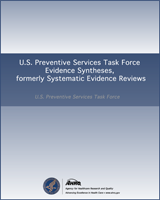From: 2, Methods

Common Syndromes in Older Adults Related to Primary and Secondary Prevention [Internet].
Evidence Syntheses/Technology Assessments, No. 87.
Kane RL, Talley KMC, Shamliyan T, et al.
Rockville (MD): Agency for Healthcare Research and Quality (US); 2011 Jul.
NCBI Bookshelf. A service of the National Library of Medicine, National Institutes of Health.
